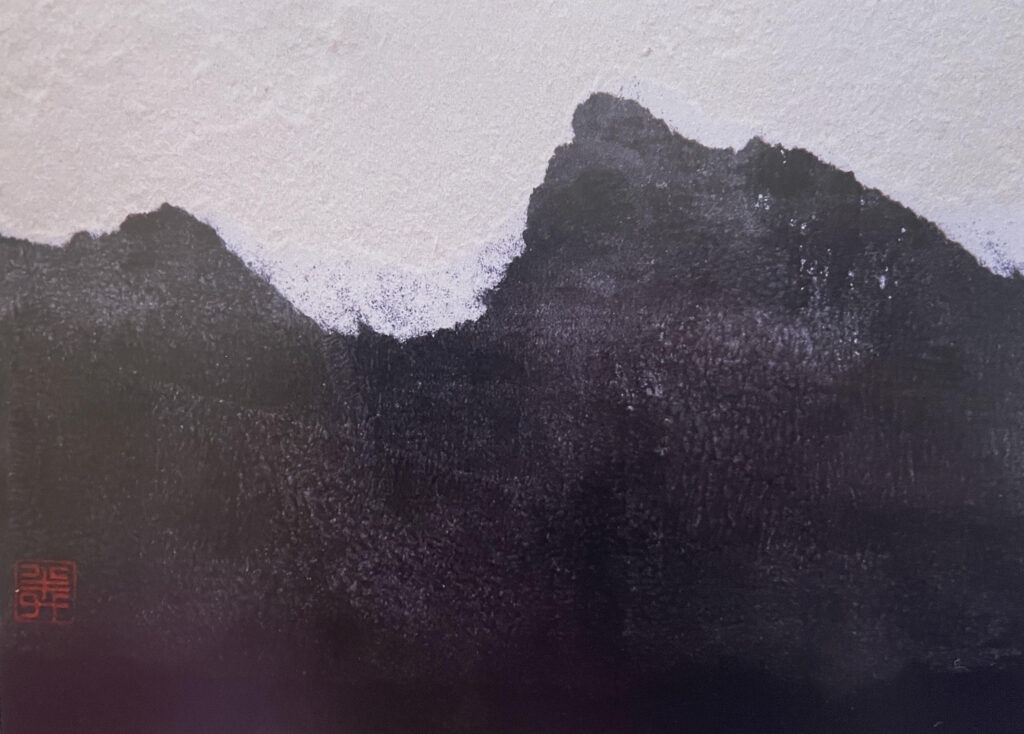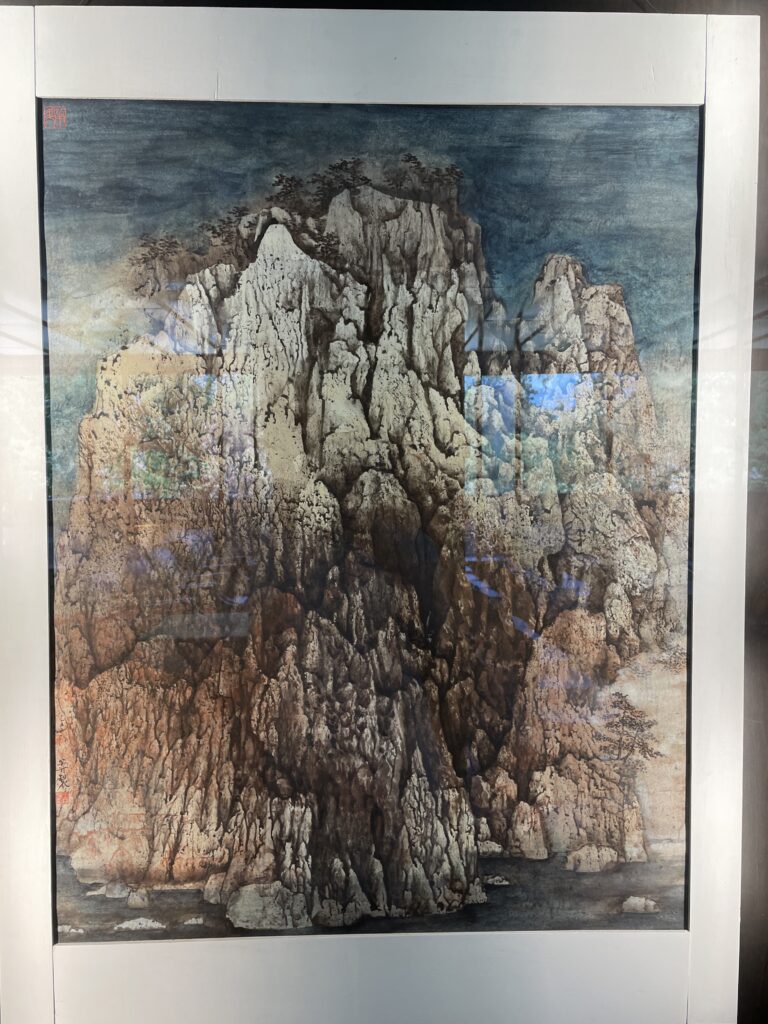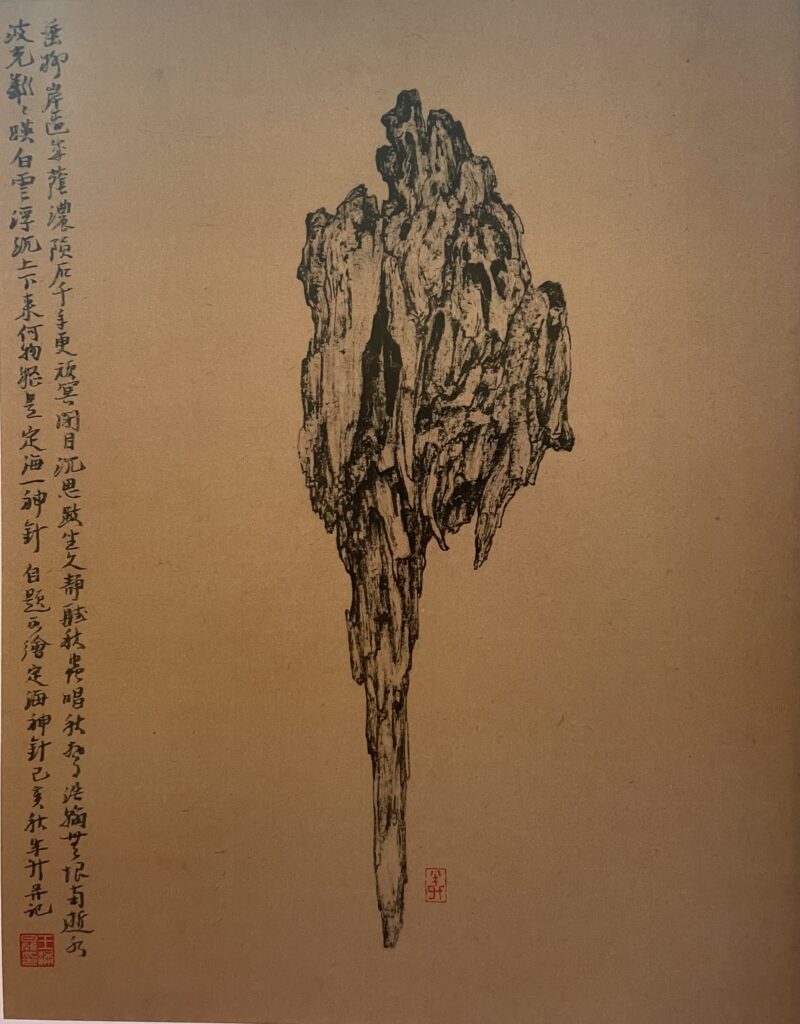Claire Fadness
Overview
With the untouched beautiful landscape that is the newly discovered North America, many artists were inspired to depict this beautiful natural scene. A fundamental part of American art history is the way this new land was depicted. It was seen by many as this new hope and opportunity for a fresh start. There were endless opportunities through this land. The first native school of painting in the United States was the Hudson River School. Artists such as Thomas Cole, Thomas Doughty, and Asher Durand churned out an incredible amount of work focusing on the idea of this “unspoiled wilderness”. This is reflected in the work of Mansheng Wang many years later. He too was new to the land and the endless possibilities that it provided. Taking from his knowledge and previous works from when he traveled along the Silk Road, he is able to give the Hudson Valley a fresh perspective while still utilizing the traditional Chinese methods.
Mansheng Wang is a contemporary Chinese American artist based out of Dobbs Ferry, NY, but is originally from the Shanxi province in China. There he studied traditional Chinese painting and calligraphy. Later in his life he would travel along the Silk Road and gained inspiration from this journey, especially from ancient calligraphy and Buddhist works. His art has always been deeply rooted in his environment and his search for a home to settle down. We see how deeply he has connected with the Hudson Valley simply by the tools and materials he uses to create his work. He has used ink he made from walnuts and made brushes from a phragmite reed found growing on the bank of the Hudson. This practice of taking materials from the environment can also be traced back to Wang’s study of classic Chinese painting techniques. He also used ink from pine soot and a traditional brush.
The idea of the “useless” has been a concept that has fascinated Wang even outside of his use of natural materials. Initially he would practice his calligraphy on newspaper to avoid using higher quality paper, but grew to appreciate it and uses it for his work. Wang discovered that he actually liked it as a marriage of eastern and western culture. The fact that he was using the New York Times, a paper based out of the Hudson Valley, is an interesting detail to note. Wang wonders if people who see these works in the future will try to work out the crossword puzzle underneath the Chinese characters. He would also uses pieces of cardboard as a canvas for some of his paintings, one even featured here. The idea of the “useless” is explored outside of material but also in actual subject matter. Drift wood is seen as useless, rotten wood in China, but Wang appreciated how the wood was shaped by the river and the valley. He would make a series of paintings featuring the driftwood he would find. With his traditional Chinese landscape painting training, the pieces of wood almost read as mountains.

Title: Autumn Water
Date: 2006
Artist: Wang Mansheng
Location: New London, Connecticut
Culture: Chinese
Medium: Ink on paper
Dimensions: N/a
Repository: Chu-Griffis Asian Art Collection, Shain Library, Connecticut College, New London
Donated by Chu-Griffis Art Fund
Description: Mansheng Wang would often go on hikes up in the Adirondacks with his wife to see the mountains and waterfalls. He was inspired to see where the Hudson River started. His waterfall series was inspired by those he found in the mountains. Waterfalls are often the main feature in traditional Chinese landscape paintings. Wang successfully transfers over his knowledge of art from China and the Silk Road here. Often though in Chinese paintings we would see figures walking around the landscape, helping us to draw our eyes from point to point ang giving a sense of scale. Wang has omitted any human evidence and instead uses the contrast between light and dark/positive and negative space to allow the eye to flow around the piece. The trees at the bottom show us how truly massive this scene is.

Title: Waterfall Series 3
Date: 2010
Artist: Wang Mansheng
Location: New London, Connecticut
Culture: Chinese
Medium: Ink on paper
Dimensions: N/a
Repository: Chu-Griffis Asian Art Collection, Shain Library, Connecticut College, New London
Donated by Chu-Griffis Art Fund
Description: Here is another painting that’s main focus is a waterfall. This piece is much darker with plenty of use of a true black ink. The waterfall is smudged giving the perfect illusion of the mist that surrounds that much falling water. The waterfall here feels smaller than the one we previously looked at as it is a much smaller scene and we have no concept of scale. The sharp contrast in lighting on the surrounding area makes for a very convincing wet rock-scape. This is not the first time an artist has felt so inspired by the source of the Hudson. I encourage you to look into the work of the Hudson River School where many artists depicted a similar scene in a vastly different way.

Title: Bear Mountain
Date: 2010
Artist: Wang Mansheng
Location: New London, Connecticut
Culture: Chinese
Medium: Ink and color on cardboard
Dimensions: N/a
Repository: Chu-Griffis Asian Art Collection, Shain Library, Connecticut College, New London
Donated by Chu-Griffis Art Fund
Description: This is one of the simpler pieces chosen to exhibit, but still just as interesting and visually pleasing. Taking advantage of the “useless”, Wang has painted this piece on a cardboard sheet. This allows for a beautiful texture throughout the whole painting, but definitely more noticeable in the white sky. With the black and white of the piece, and the addition of texture, it almost seems like it is snowing on the mountain with a bright pure sky. Bear mountain is a real mountain that Wang has traveled to in the Hudson Valley. The red seal on the bottom left of this piece adds a dynamic touch.

Title: The Breath of Autumn
Date: 2017
Artist: Wang Mansheng
Location: New London, Connecticut
Culture: Chinese
Medium: Limited edition print
Dimensions: N/a
Repository: Chu-Griffis Asian Art Collection, Shain Library, Connecticut College, New London
Donated by Chu-Griffis Art Fund
Description: The painting depicts a mountain with a hard to grasp scale resting on the banks of a river. The colors in this piece are deep earthy tones with the occasional bright orange balanced out by its complementary blue of the sky and water. We see the occasional tree on the right and amidst the top of the mountain with fog rolling in from the right. The lighting points us to believe that this was done with a fall late afternoon/early evening in mind as we have a dark sky but dramatic lighting on the rock surface. This region of New York is renowned for its beauty in the fall season with the big river, surrounding mountains, and absolutely stunning lighting that comes in from a sharp angle.

Title: Driftwood from the Hudson 1
Date: 2019
Artist: Wang Mansheng
Location: New London, Connecticut
Culture: Chinese
Medium: Ink on Paper
Dimensions: N/a
Repository: Chu-Griffis Asian Art Collection, Shain Library, Connecticut College, New London
Donated by Chu-Griffis Art Fund
Description: The final piece being looked at is the first of the driftwood pieces from Wang’s driftwood series. The obvious focal point of the piece, is the wood set against a blank page save for the writing on the left. Wang has chosen to include calligraphy in the form of a poem with this painting. His brushstrokes are evident of many years of study of Chinese calligraphy. When looking at this piece, I am reminded of his more detailed black and white landscape works. This could just as easily be recognized as a section of a rocky mountain as much as a piece of wood. If Wang had chosen to continue the pattern of the wood we would be looking at a traditional landscape.
Bibliography
Images
All images of the works were photographed by me from the exhibit “Silk Road to Hudson Valley” in the Charles Chu room of Connecticut College.
Texts
Hewitt, Cate. “Wang Mansheng Roots Art in Shanxi and the Hudson in Connecticut College Show.” The Connecticut Examiner, 8 Feb. 2020, https://ctexaminer.com/2020/02/08/wang-mansheng-roots-art-in-shanxi-and-the-hudson-in-connecticut-college-show/.
“Last Rays of Sunset.” Brooklyn Museum, https://www.brooklynmuseum.org/opencollection/objects/215069.
Schuyler, David. Sanctified Landscape: Writers, Artists, and the Hudson River Valley, 1820-1909. Ithaca: Cornell University Press, 2012. Print.
“News Release – Chinese Garden’s New Art Gallery to Feature Contemporary Calligraphy in Inaugural Exhibition Focused on Illuminating the Art Form.” The Huntington, 13 Aug. 2019, https://www.huntington.org/news/chinese-garden-calligraphy-exhibition.
“Meet Westchester’s Art Stars.” Westchester Magazine, 26 Aug. 2021, https://westchestermagazine.com/things-to-do/arts-culture/meet-westchesters-art-stars/.
Team, Editorial, and Admin. “折蘆為筆 Interview with Mansheng Wang.” Fu Qiumeng Fine Art, 13 Aug. 2019, https://fuqiumeng.com/en/%e6%8a%98%e8%98%86%e7%82%ba%e7%ad%86-interview-with-mansheng-wang-2/.
Ghee, Joyce C., and Joan Spence. Eleanor Roosevelt: A Hudson Valley Remembrance. Arcadia, 2005.
Fairly, Judith. “A Brief History of American Landscape Painting.” Artists Network, Golden Peak Media, 16 May 2011, https://www.artistsnetwork.com/magazine/a-brief-history-of-landscape-painting/.